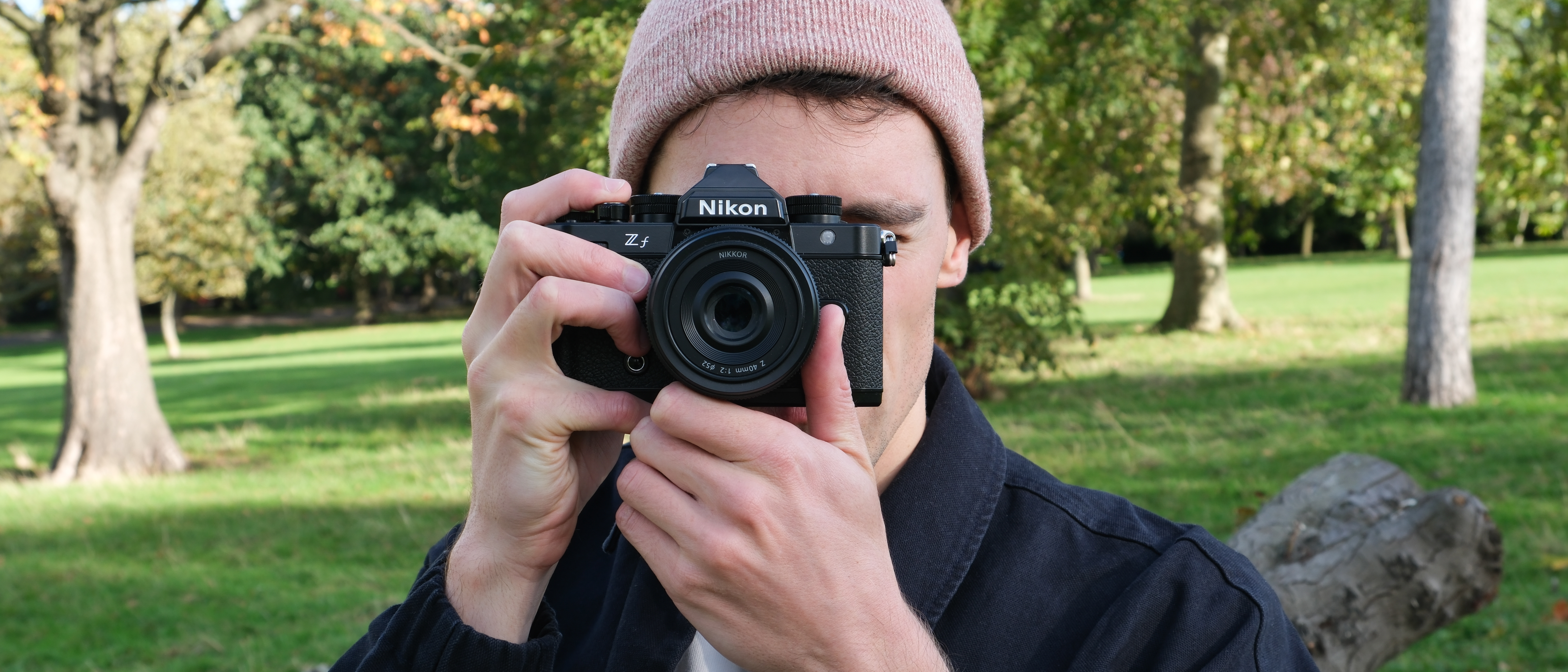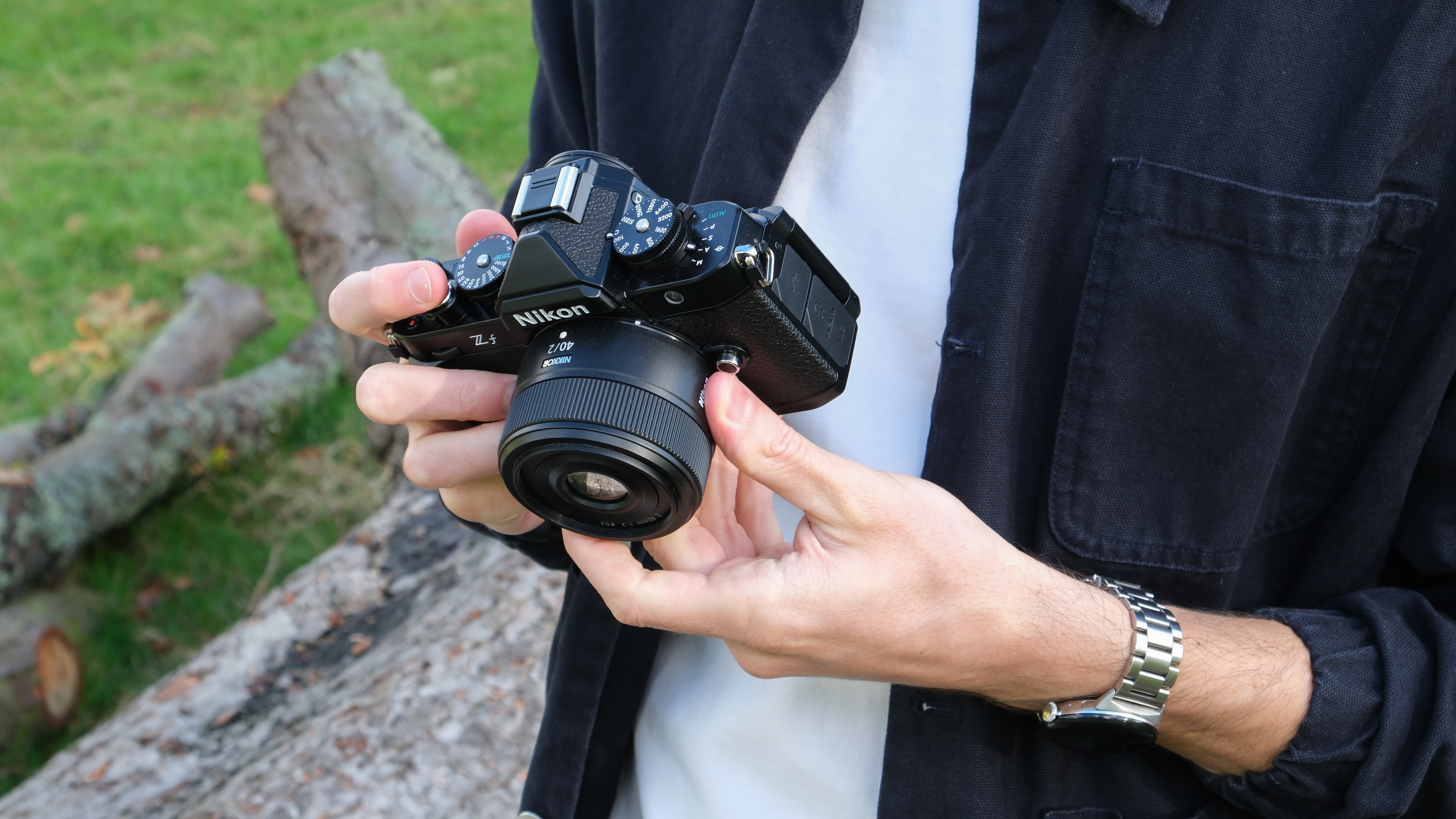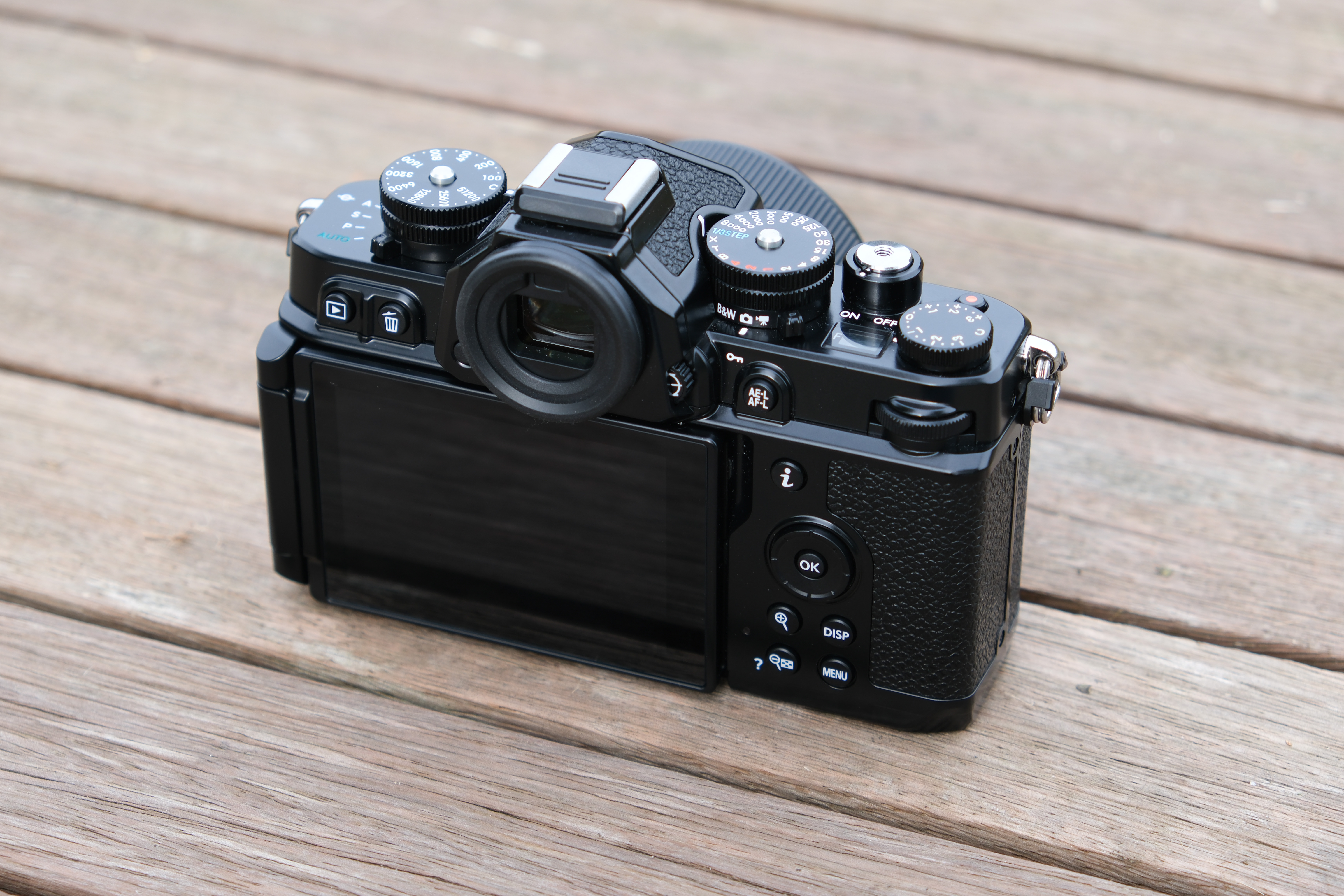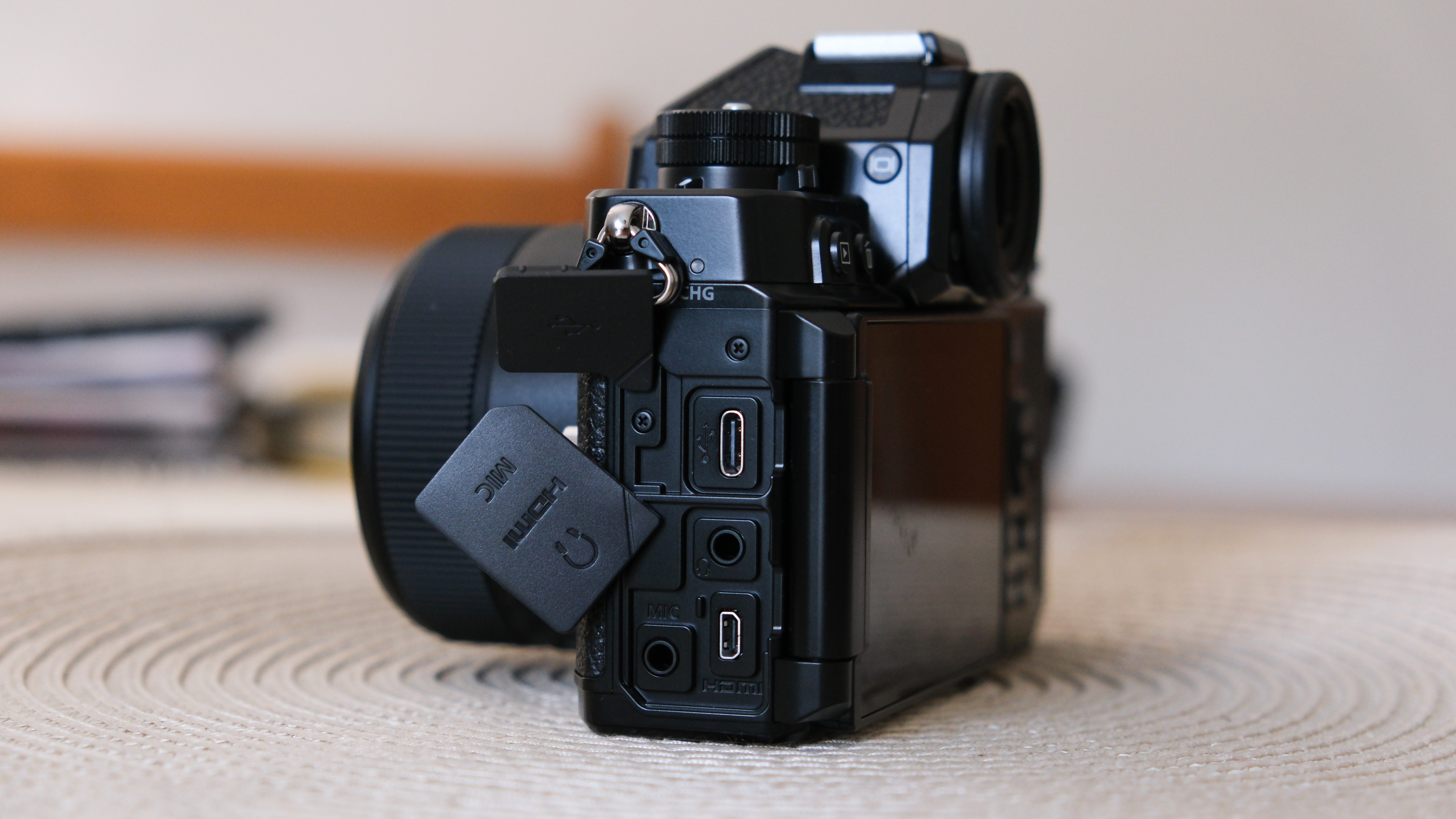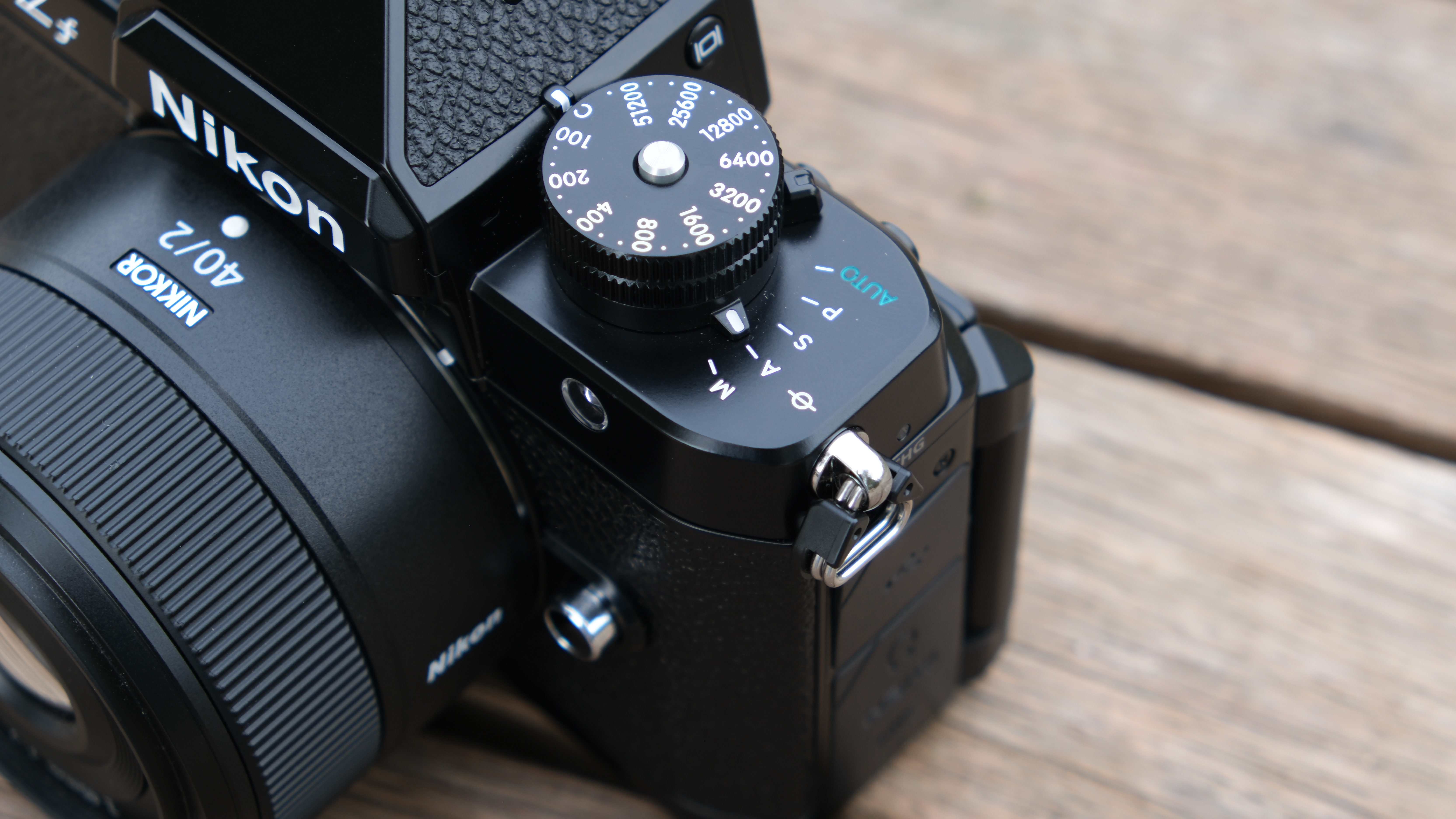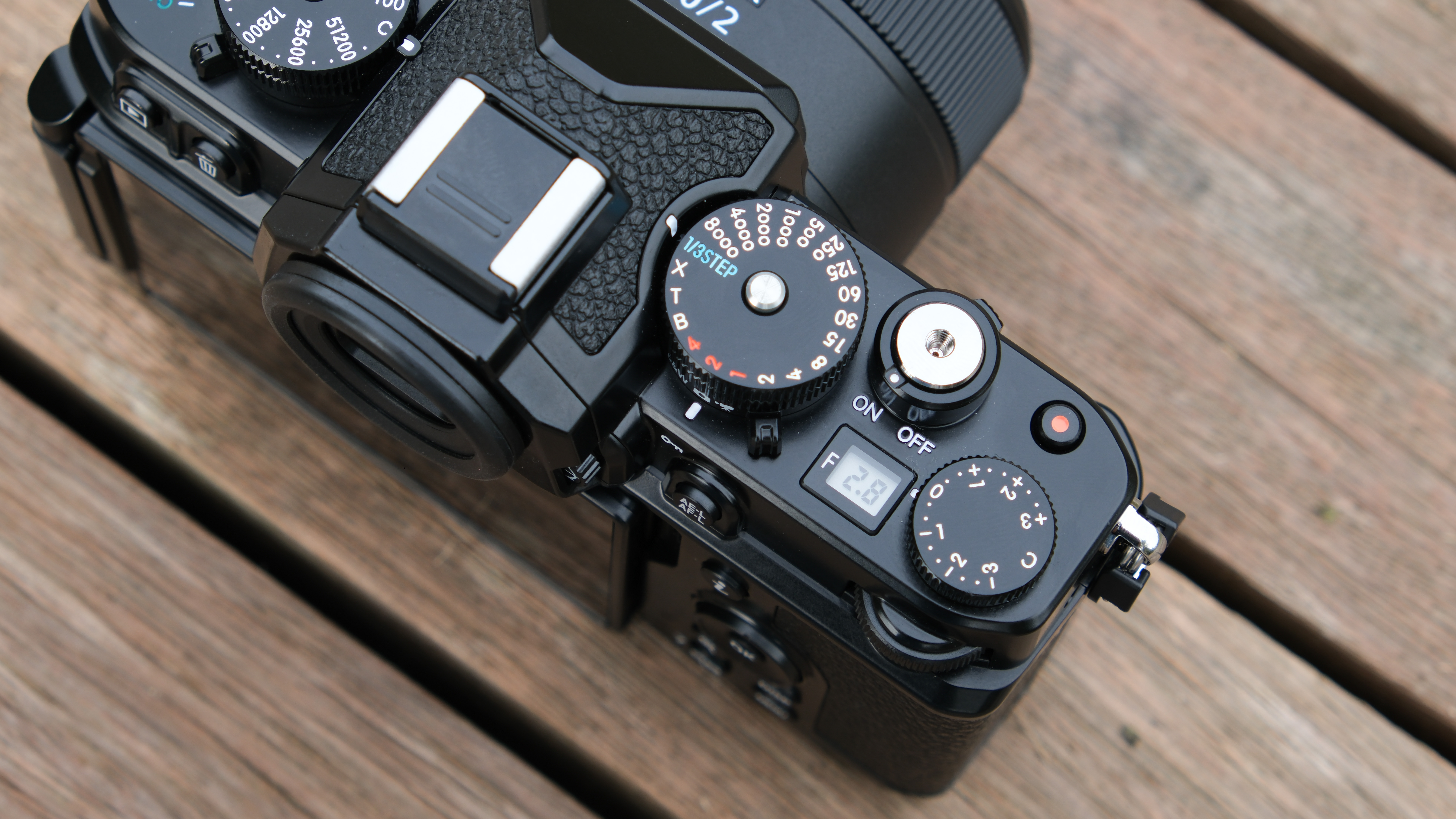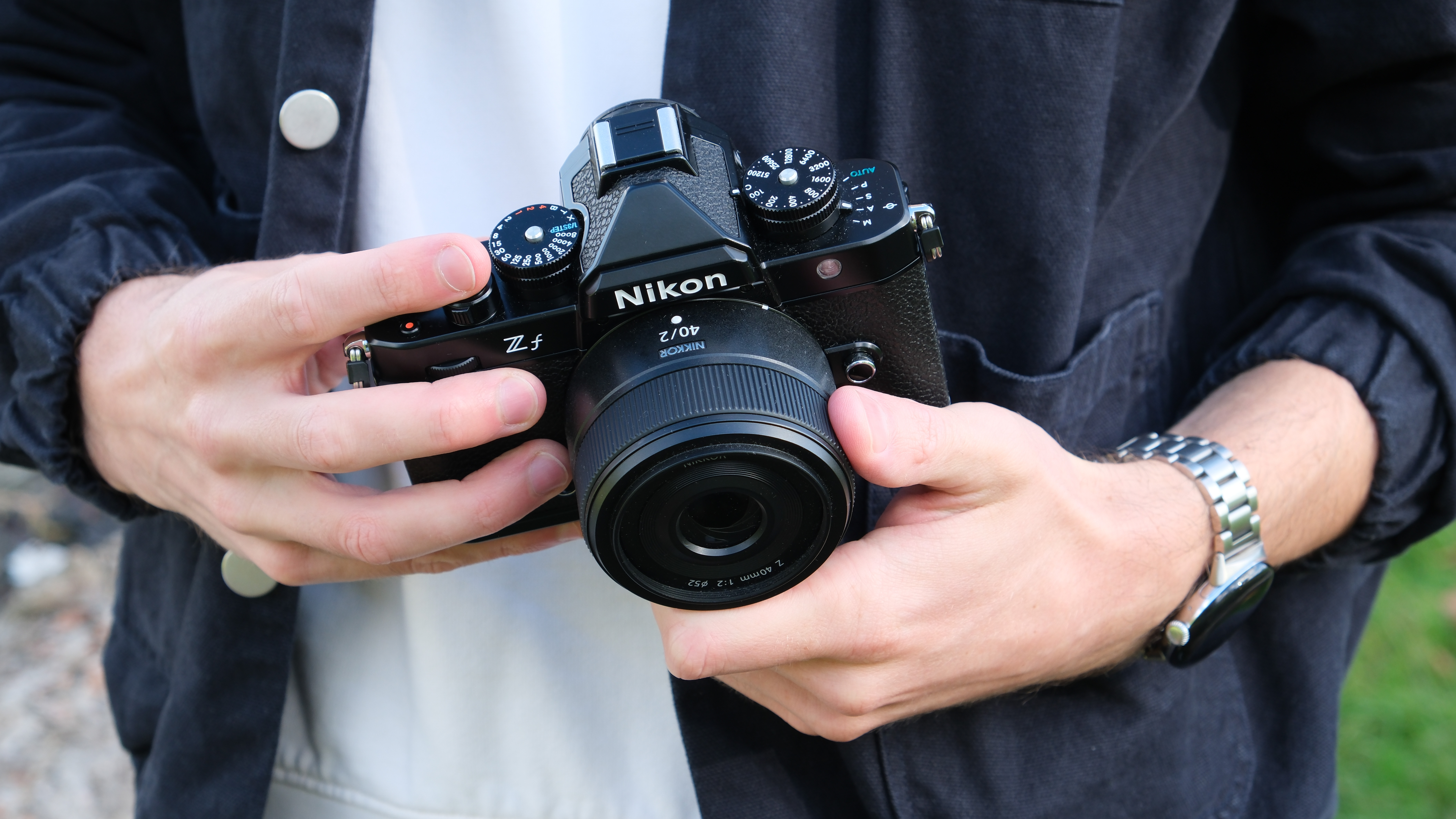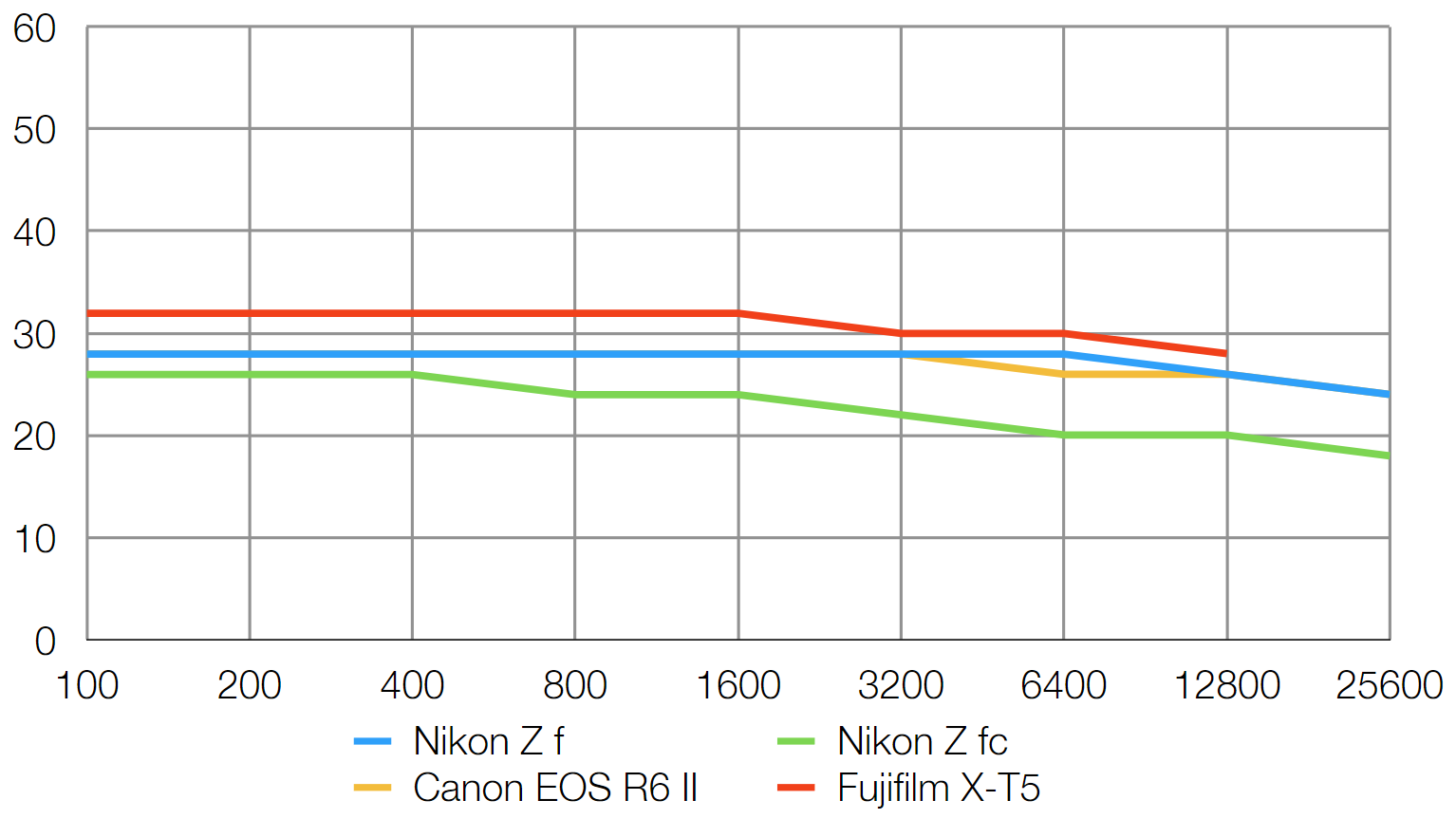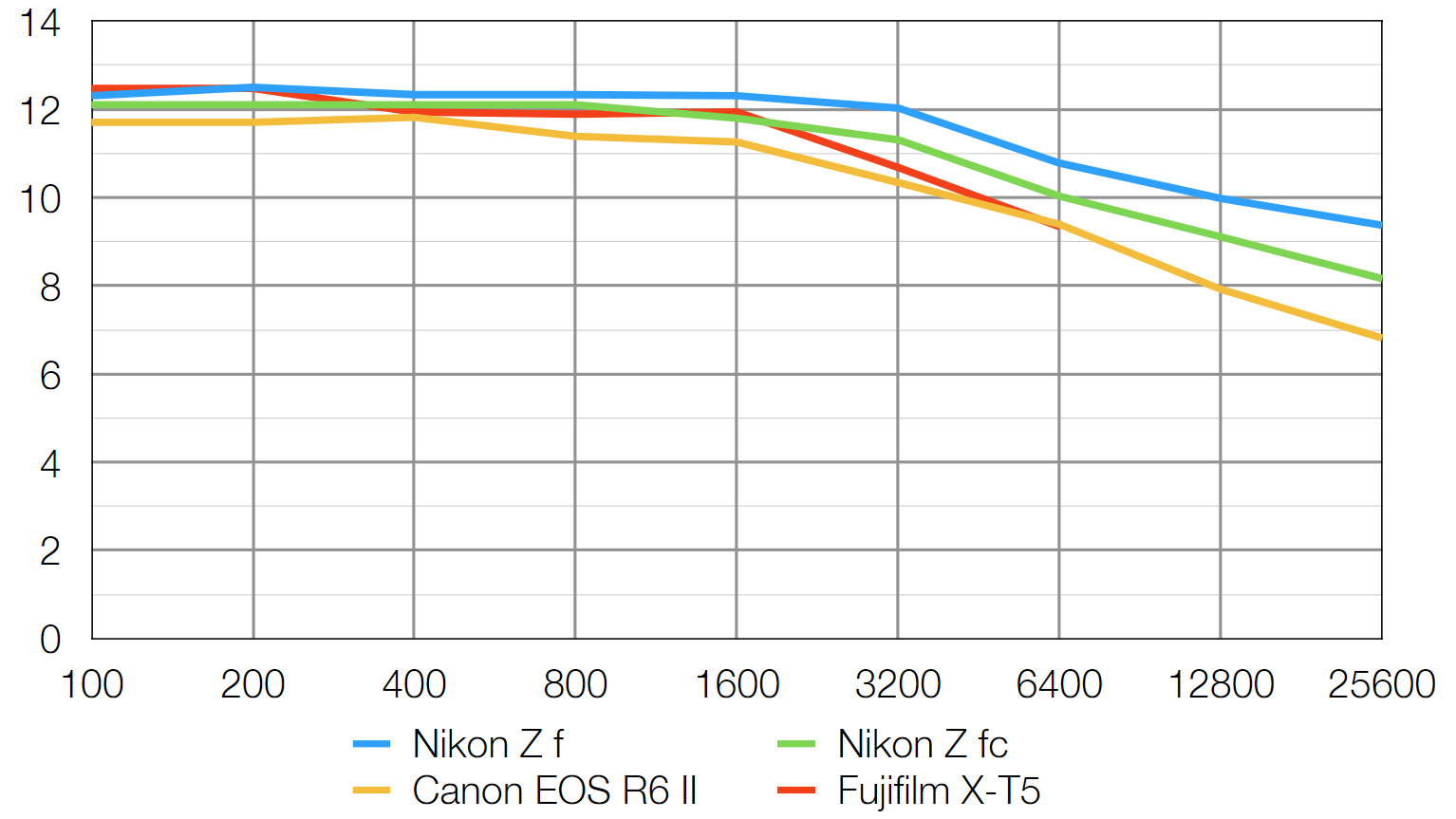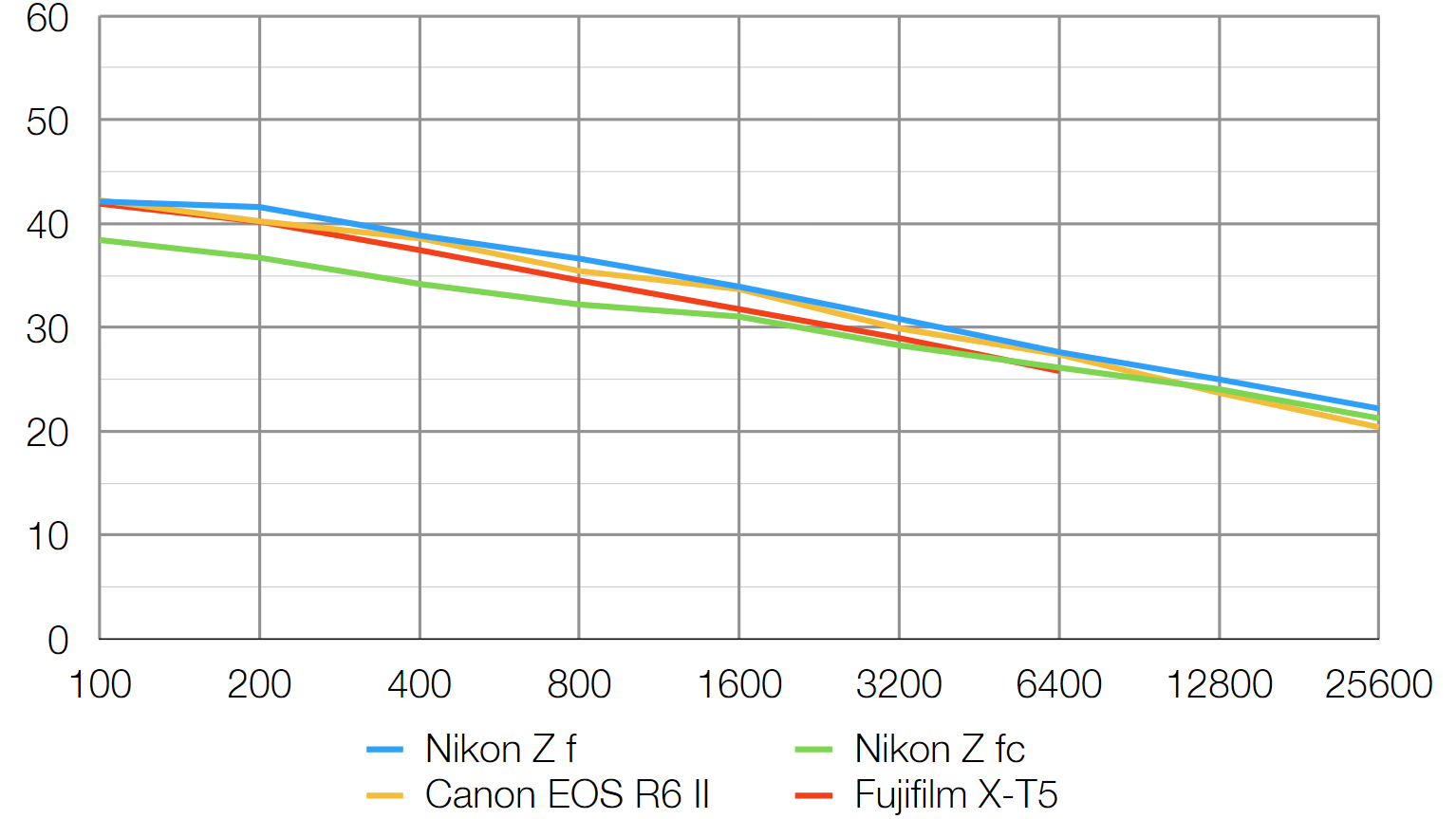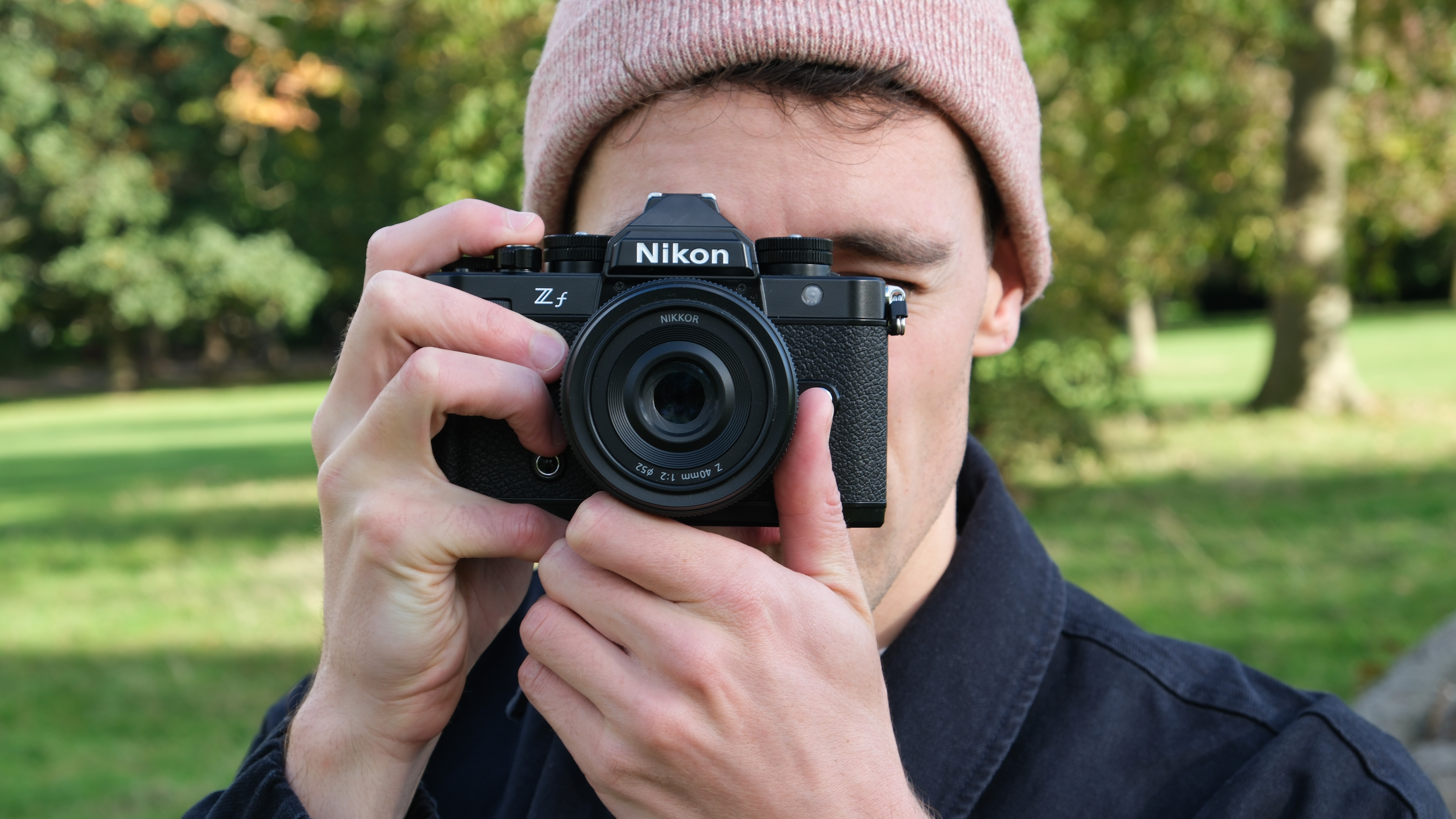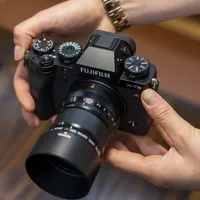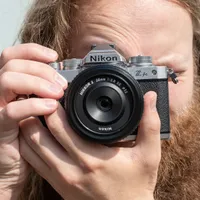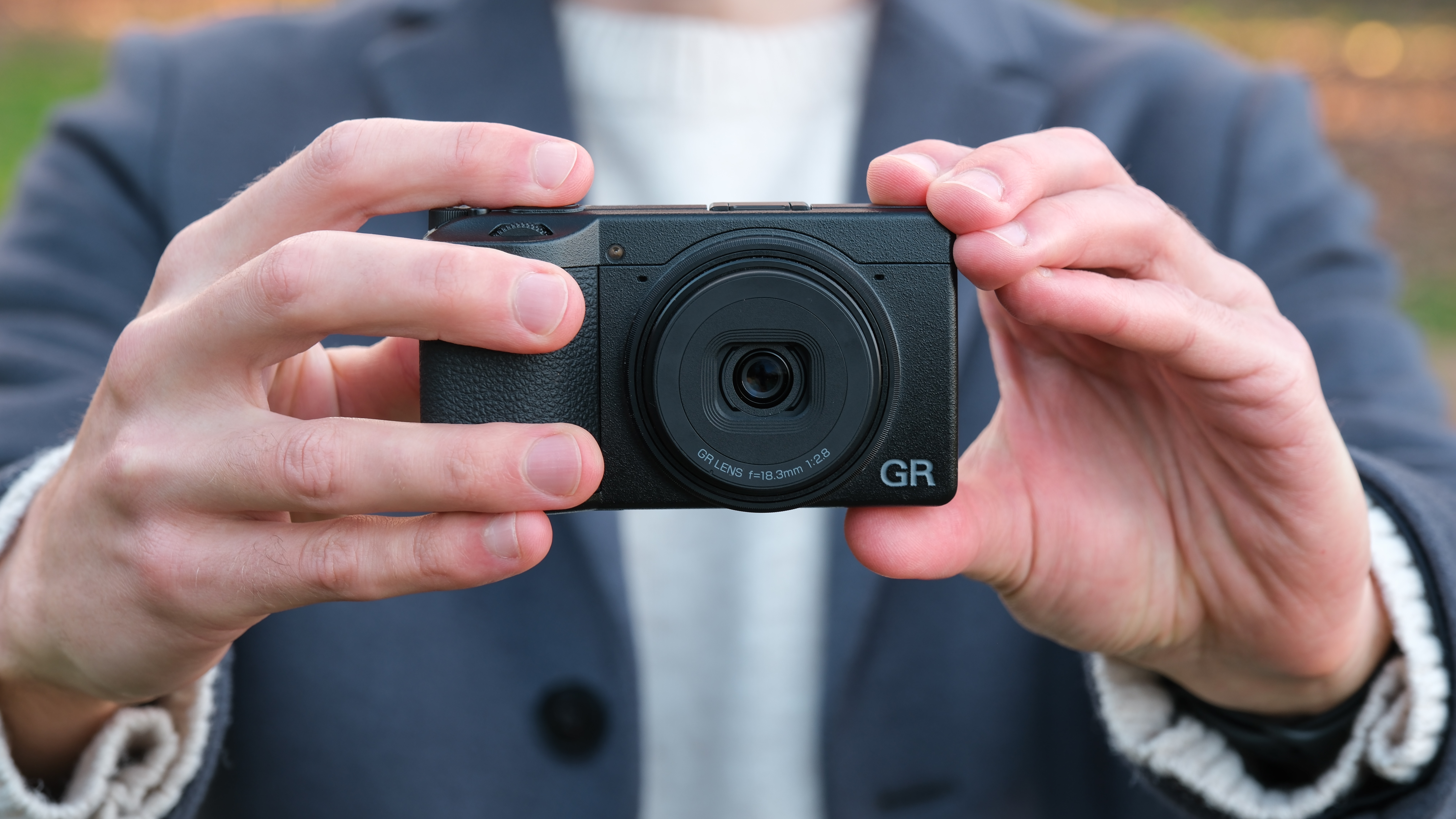Digital Camera World Verdict
The Nikon Zf will immediately win over any vintage camera enthusiast, as soon as I picked up this camera, it gave me the nostalgic feelings for shooting film that I have missed. Nikon teased what could be with the Z fc, but the Zf is here to make progress on that camera's shortcomings. The body is an improvement over the Nikon Z fc, with more solid brass dials and a weighty heft to it that feels much more akin to the Nikon FM2 that inspired it. However, prioritizing looks is a double-edged sword, the camera is severely impeded by its lack of grip, as well as being heavy, which makes the Zf very uncomfortable to hold. Luckily images are hugely impressive with the combination of the Z6 II sensor and Expeed 7 processor, low light performance gets a bump, autofocus is faster with better tracking, and 4K video is excellent.
Pros
- +
Stunning retro design and build quality
- +
Manual dials
- +
Full frame sensor
- +
Autofocus smarts from the flagship Z9
Cons
- -
Lack of matching lenses
- -
Very Shallow grip
- -
Articulating screen and hinge are not flush with the body
Why you can trust Digital Camera World
The Nikon Zf isn't the manufacturer's first attempt at reviving the style of film cameras for the digital age. The Nikon Df came along in 2013, but failed to take off enough to garner any sequels. Nikon dipped its toe in the water again in 2021 with the release of the Nikon Z fc and, luckily, got a very different reaction from buyers.
Nikon has repeated several times that the demand for the Z fc has far exceeded its expectations, clearly showing that there is a serious appetite for cameras with a vintage aesthetic.
And the Nikon Z fc was universally fairly well received; we gave it a near-perfect score, enamored with its vintage looks but criticizing its build quality and ergonomics. However, almost immediately after the release of the Z fc, eager users started asking for a full-frame version with the same classic styling, so it seemed almost inevitable that Nikon would deliver just that. You can check out our Nikon Zf vs Z fc comparison to see the differences between the two models.
Now it appears that Nikon is fully onboard the vintage-inspired camera train with the release of the Nikon Zf – a full frame version of the Z fc that is finally the true digital successor to the classic Nikon FM2 film camera.
Nikon is hoping to answer the criticisms leveled at the Z fc with the considerably more expensive and larger Nikon Zf, but has it done enough to make this the perfect camera for vintage enthusiasts?
Nikon Zf: Specifications
| Sensor | Nikon FX |
| Effective megapixels | 24.5MP |
| Autofocus | 299 points, 89% x 96% coverage, -10EV |
| ISO | 50 - 64,000 (204,800) |
| Burst shooting | 7.8fps RAW/JPEG, 30fps JPEG |
| Video | 4K60p, 4K30p, FHD 120p |
| Image stabilization | Up to 8 stops |
| Screen | 3.2-in 2100k-dot vari-angle TFT touch-sensitive LCD |
| EVF | 3690k-dot (Quad VGA) OLED |
| Storage | 1x SD UHS-II, 1x Micro SD |
| Weight | 710 g (1.57 lb) |
| Size | 144 x 103 x 49 mm (5.67 x 4.06 x 1.93 in) |
Nikon Zf: Key Features
Despite its retro exterior, the Nikon Zf incorporates the latest advancements inherited from the company's flagship models, the Nikon Z8 and Z9. Its core features include a 24.5MP full-frame sensor, powered by the Expeed 7 processor, which enhances autofocus performance, expands file format options, improves in-camera stabilization, and provides exceptional low-light capabilities with an extended ISO range of up to 64,000.
The Nikon Zf boasts the same impressive autofocus system as the Z8 and Z9, equipped with 299 focus points that cover a substantial 89% by 96% of the sensor area. This system is adept at subject tracking, including humans (faces, eyes), animals, birds, and vehicles, ensuring precision even in challenging shooting conditions as dark as -10EV.
The best camera deals, reviews, product advice, and unmissable photography news, direct to your inbox!
Unique to the Nikon Zf is the introduction of subject detection algorithms that function seamlessly in manual focus mode or when using adapted manual focus lenses, enhancing exposure accuracy based on recognizing the subject.
The Nikon Zf is capable of achieving up to 8 stops of image stabilization with compatible lenses and offers pixel shift imaging, which combines multiple shots to create even higher-resolution images. Furthermore, in a world first, the Zf introduces the Focus Point VR system, taking stabilization a step further and employing the camera's focus point to enhance in-body image stabilization.
For videographers, the Nikon Zf offers versatile video recording capabilities, supporting 4K video at various frame rates (60p, 30p, 24p) and FullHD up to 120p. Video enthusiasts will appreciate features such as focus peaking, zebra stripes, waveform display in live view, fine ISO control, and an enhanced video information display. The camera can record continuously for up to 125 minutes, making it a viable choice for extended video projects.
Nikon Zf: Build & Handling
It has to be said, if you are a fan of the vintage styling of cameras like the Nikon FM2, then you will instantly fall for the Nikon Zf. Where the Nikon Z fc borrowed some of the styling of that classic camera, it cut corners in design and build quality. The Nikon Zf doesn’t share any of these issues. The quality of the body is exceptional, using a solid and robust magnesium alloy body, with dials made of brass that not only feel much more secure than the Z fc, but will also wear with use the same as vintage cameras from the past.
Many people will instantly dismiss this camera as a hipster camera, but I don’t know why that is a dirty term. I am the type of photographer who not only cares about how my images look but also cares about the look of all the gear that I shoot with. My camera is the most constant piece of technology in my life and gets used for years, so I end up seeing a lot of it, why wouldn’t I want it to look as good as possible?
The downside of these stunning looks? The camera has practically no grip, and is quite heavy, which makes it uncomfortable to hold. I have only been using the camera with the relatively lightweight Nikon 40mm lens, but even then my hand has been aching trying to cling onto the camera’s tiny grip. The camera was launched alongside an optional grip from Smallrig which is pretty much an open admission by Nikon that the ergonomics were compromised to achieve the classic look wanted.
For a full vintage effect, the camera has dials and switches galore, with dials for shutter speed, ISO, and exposure. The aperture is controlled using the front wheel and is displayed on the small display up top, which is thankfully larger and easier to read than the dial from the Z fc. There is also a switch to flick from stills to video, different shooting modes, as well as swapping the camera from color to monochrome. The mode is set using a sliding switch, which did manage to get knocked a few times into a different mode, so I had to learn to check it before I started shooting. The shutter button on the Zf is frustratingly sensitive, and I ended up taking far too many shots of the ground, or before the camera had focused.
The Nikon Zf isn’t all vintage, there are a few modern twists as well, the Zf has a fully articulated screen on the rear, so you can vlog or shoot from awkward angles, and there are all the modern ports present for charging the battery in-camera via USB-C or connecting headphones or microphones. I personally think that Nikon should have gone with a tilting screen for the Zf, as the hinge for the screen does stick out a little awkwardly, and the screen does not fold flush against the back of the camera.
The viewfinder on the Nikon Zf is a joy to use, it is big and clear with a sharp resolution and refresh. I tended to flip the screen around completely and compose images entirely using the viewfinder for the full film camera effect, although unfortunately there is no Fujifilm X-Pro3 style e-ink screen. There is a small rubber ring around the eyepiece which makes it more comfortable to use, but for some reason, it seems to attract a lot of lint.
One slightly odd addition to the Nikon Zf is its micro SD card slot, which sits alongside the SD UHS-II slot. I am unsure why the camera was not given two standard SD card slots when similar-sized cameras have no issue fitting this in. Micro SD is just not fast enough for many applications that the camera can be used for like 4K video or fast burst rates with long buffers. However, if given the choice of just a single SD card or an SD and Micro SD combo, with the MicroSD used as a backup card, then the latter is obviously the better proposition.
One downside to Nikon’s new vintage-inspired cameras, is they have relatively few lenses that are designed to match. Unlike rivals like Fujifilm or Olympus, where all its lenses walk the line between classic and modern design to work on all its body styles, most Nikon Z lenses are styled to match the modern Z system cameras.
Currently, there are only three lenses that will complete the look of your Nikon Zf, and while you can, of course, use any Nikon lens on the Zf via the FTZ adapter, I don’t think adapters are really an adequate solution, and I personally would struggle to buy into a camera with this vintage design if I can’t get the lenses I want with the same look.
This confused split has led to issues like the retro-inspired Nikon lenses bafflingly not having aperture rings, which when such careful consideration has been taken to offer the most film-camera-like experience possible in the Zf (and Z fc) body, seems like an odd choice to not include aperture rings on its lenses.
Nikon Zf: Photo Performance
With likely the same sensor as the Nikon Z6 II, images from the Zf are reliably solid. Although not breaking any records for resolution, the 25MP is large enough to produce lovely images for almost any purpose, including professional work for weddings, portraits, etc. Image resolution is great, I was limited to the Nikon 40mm lens for my testing, which is a good lens, but more premium lenses will likely produce even more impressive results.
The Expeed 7 processor inside the Nikon Zf means this camera is the closest you can get to a Nikon Z6 or Z7 III right now. The Zf inherits the new autofocus powers from the Nikon Z8 / Z9 which means it is much better at tracking subjects. In my experience with the camera, the Z8 had no issue identifying faces and eyes, and tracking them across the frame, when it came to locking onto and tracking moving subjects (I was testing this with passing cars), the tracking was solid, but sometimes the reticle would just wander off from the subject for no good reason, I don't this is quite up to the level Sony or Canon is at just yet.
The processor handled noise well, with camera noise well controlled and unnoticeable until upwards of 6400, and plenty usable until around 12800. The dynamic range is also impressive, with strongly backlit scenes still producing lots of detail in the shadows without completely blowing out the highlights.
One minor quirk I noticed was very occasionally when shooting on full auto settings was the camera would make some surprising choices. Be it either choosing a much faster shutter speed than necessary and thus cranking the ISO high to compensate. Or at the opposite end of the scale, not pumping the ISO which meant the shutter speed was very low.
Image stabilization in the Zf is excellent, I could comfortably get handheld shots down to around 1/15 in low light with no blur from my hands shaking, although your success will depend entirely on your own sturdiness.
Having black and white as a dedicated position on the mode switch wasn’t initially something I thought I would care about, although after spending a week with the camera, I found myself flicking the camera into monochrome mode much more than I anticipated. Having the mode on the dial removed the inertia of having to dig into a menu, and resulted in me shooting more in both color and black and white.
The black-and-white conversion in-camera is really well handled, the contrast I find is spot on in the default mode, but there are also hard and soft contrast options depending on your style. As this is just a conversion, you can also go into the RAW file and restore the monochrome NEF file back to its full-color glory, which makes the decision to swap into B&W mode less final for scenes you are not sure about and have limited time to shoot both.
Nikon Zf: Sample Images
These images were all shot around London and Bath in the UK with the Nikon Zf and the Nikkor Z 40mm f/2.0 lens provided by Nikon.
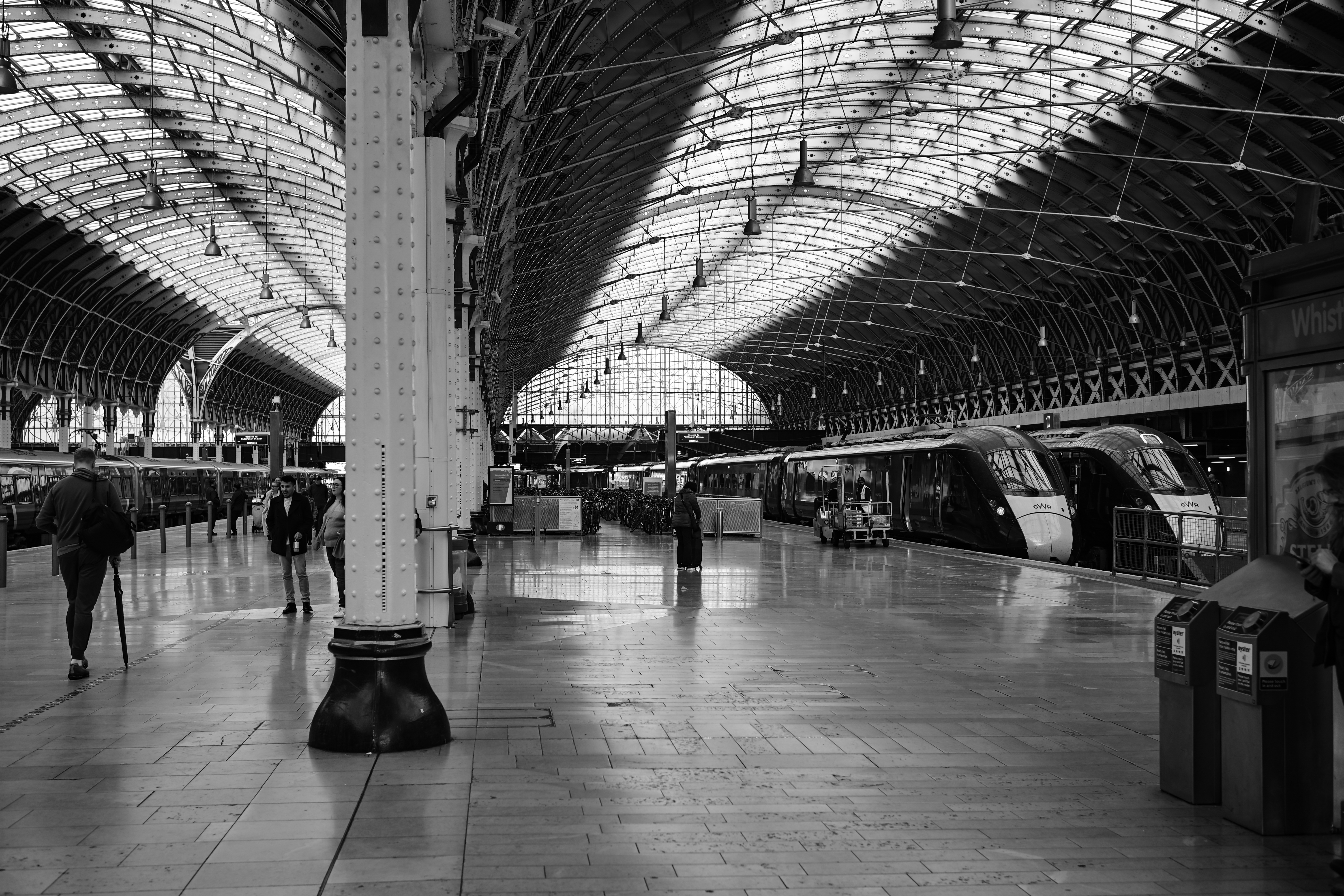
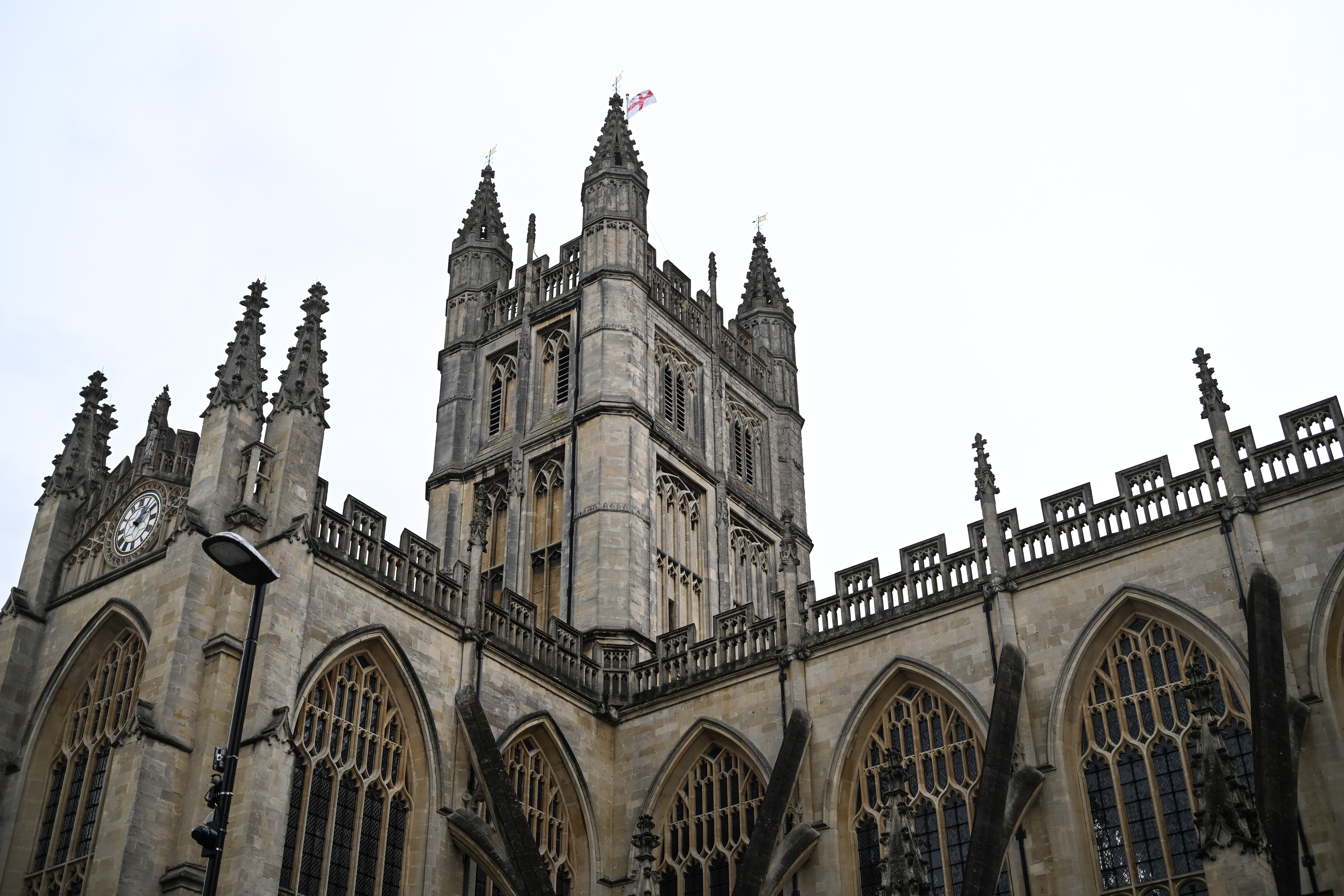
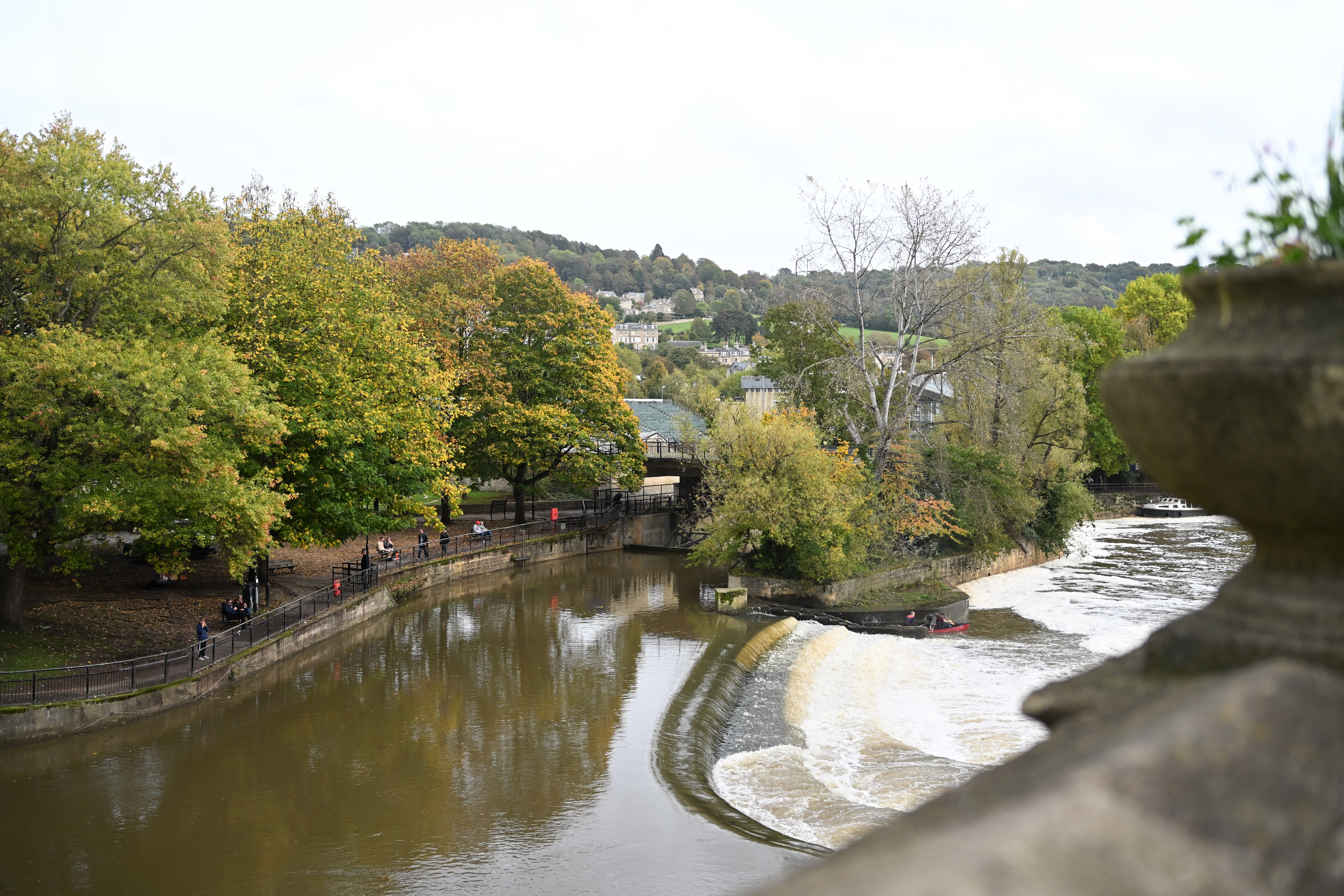
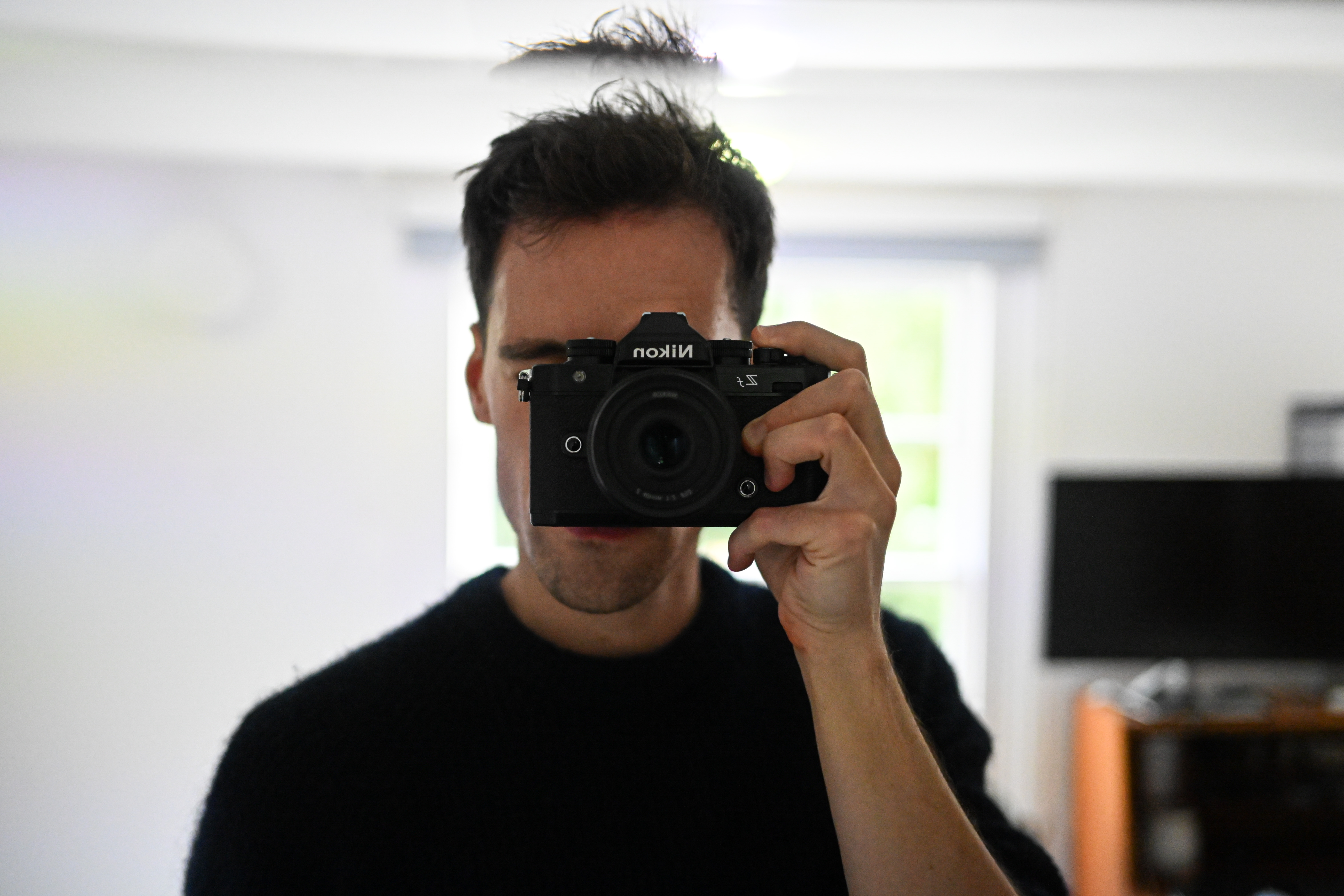
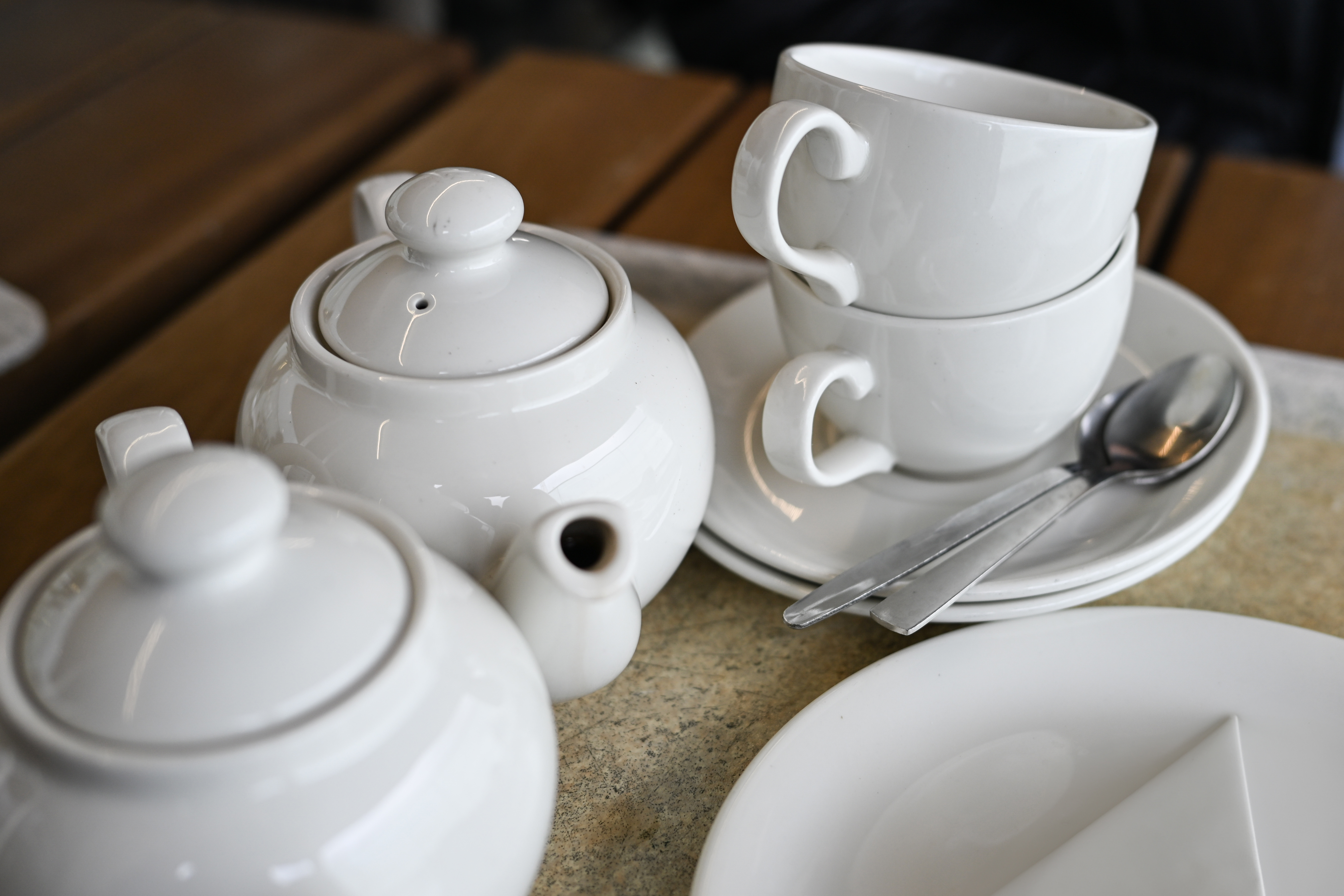

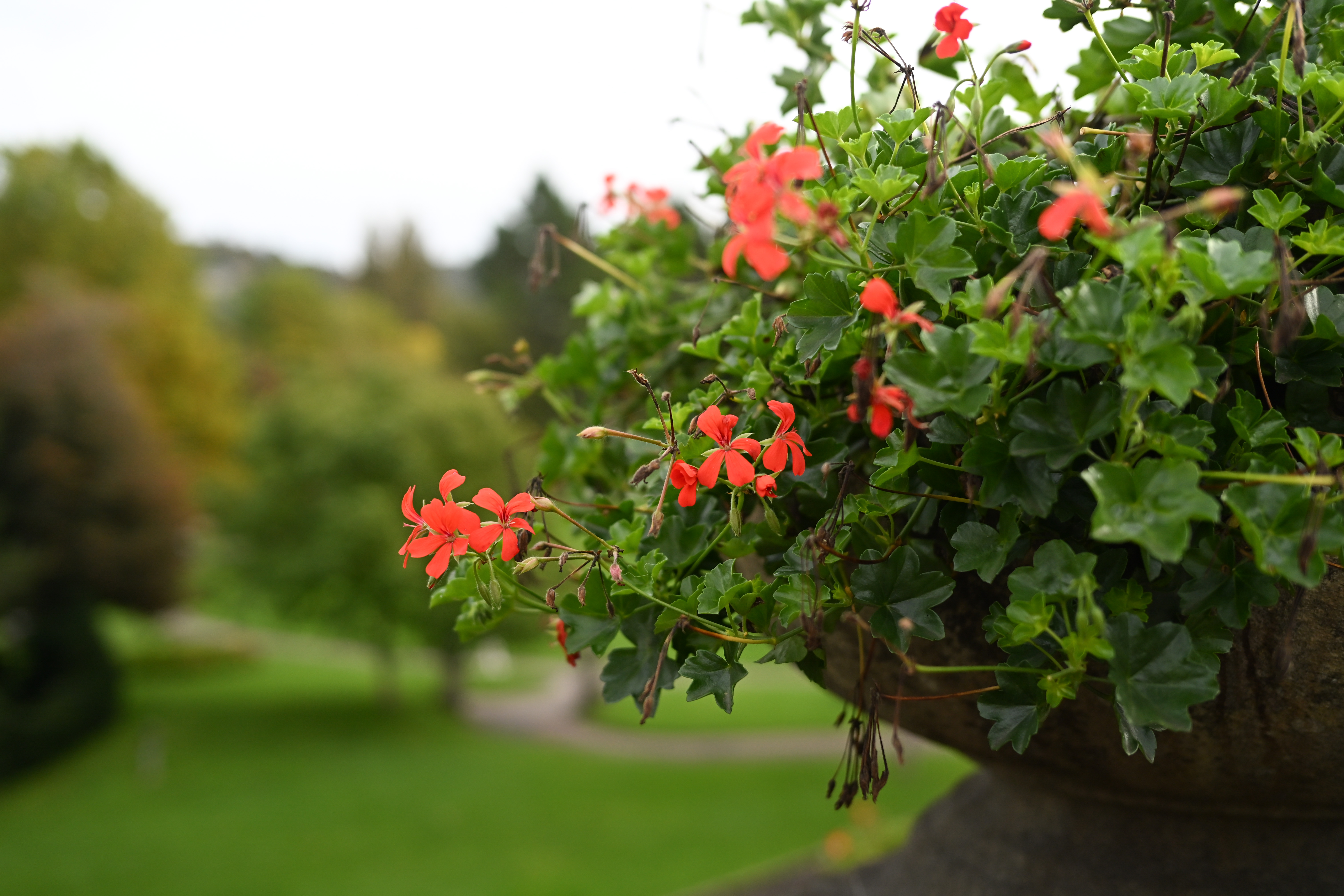
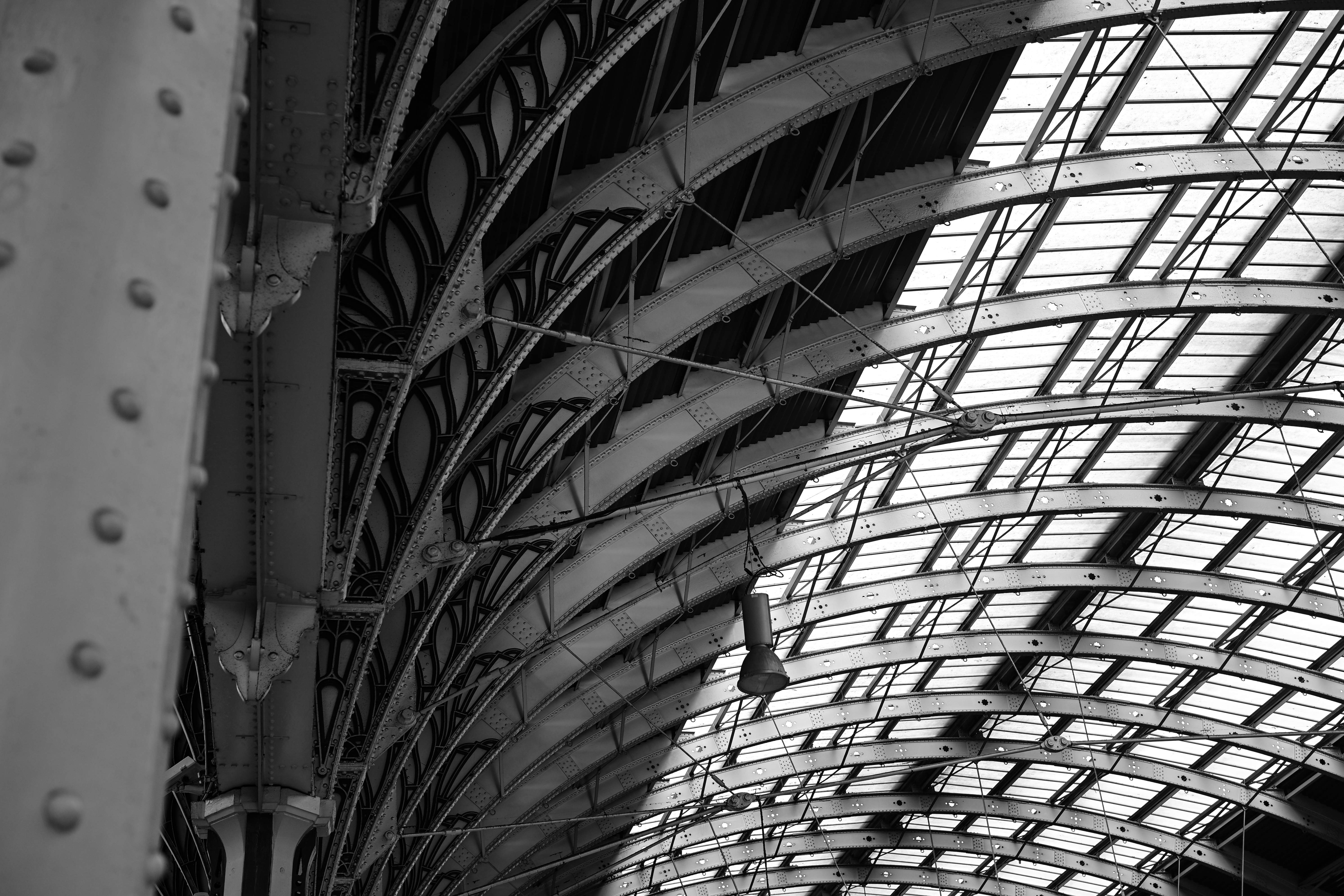

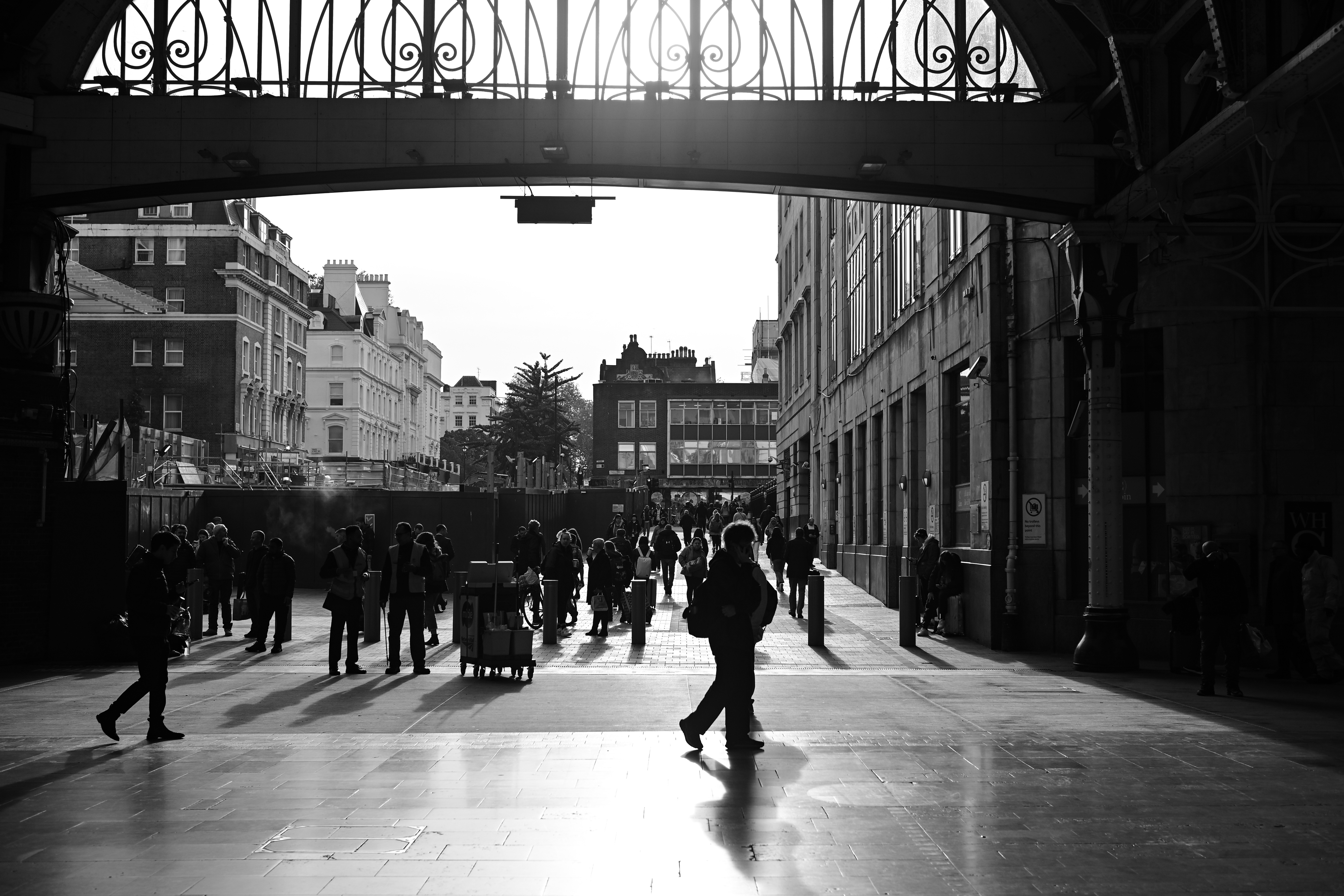

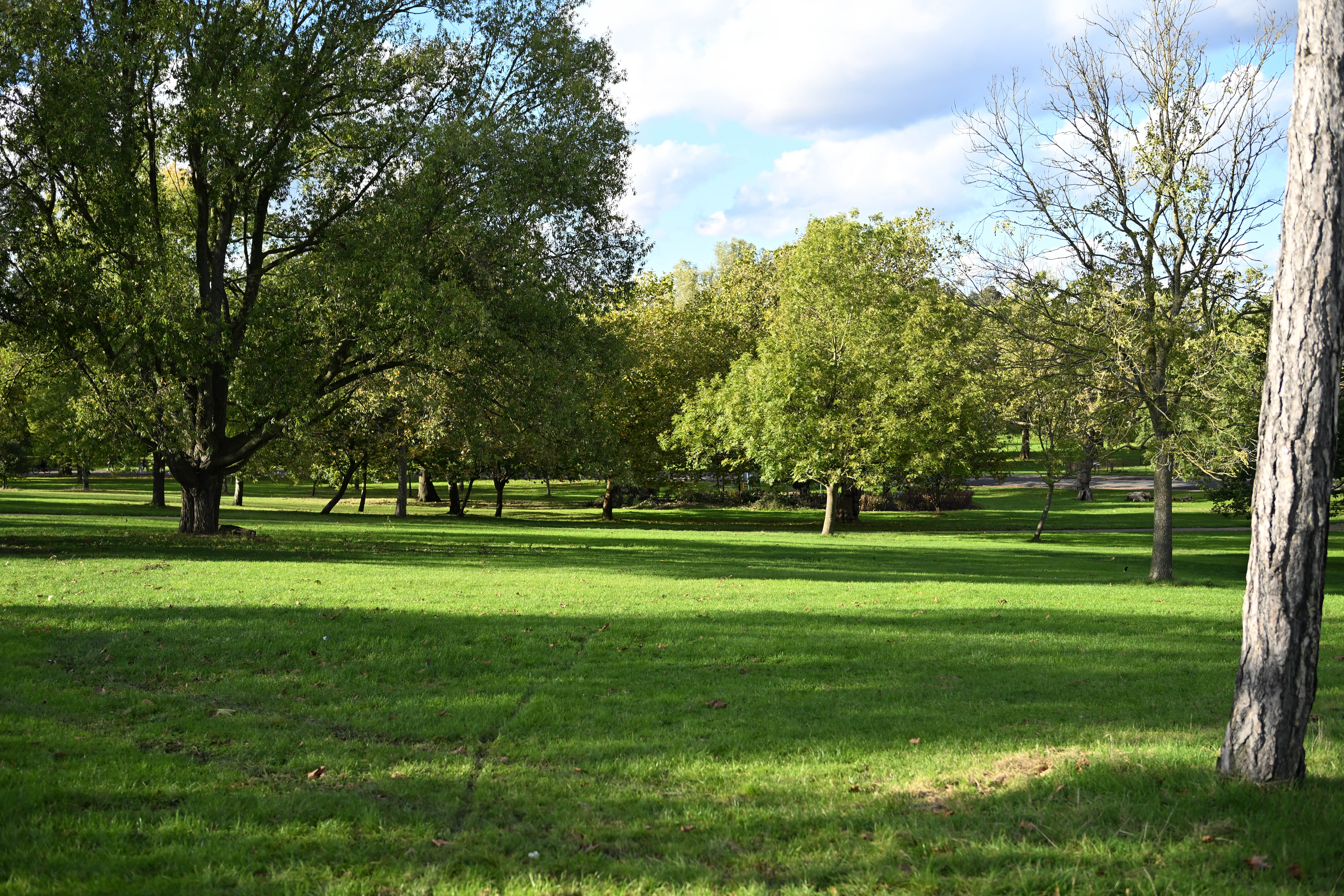
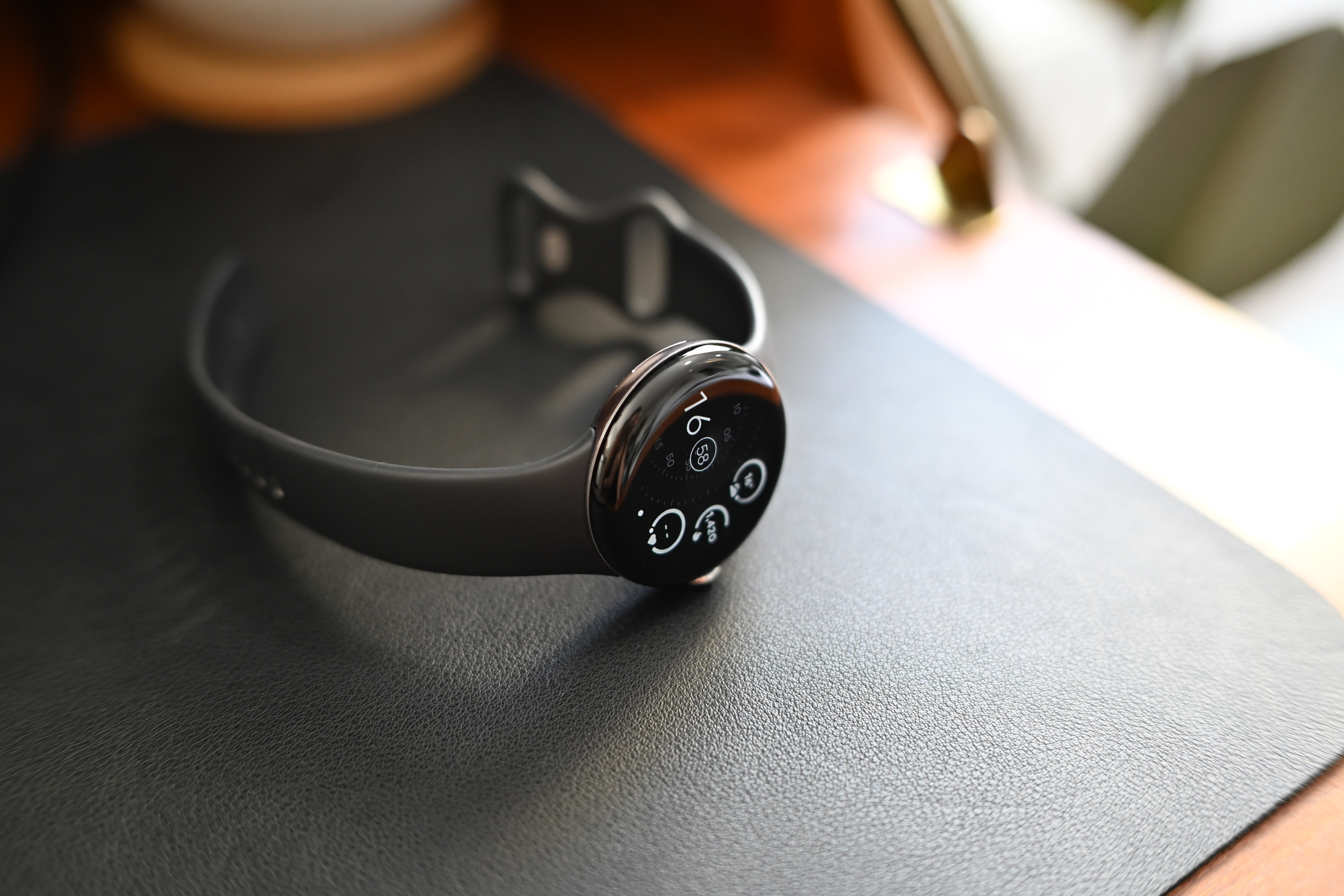

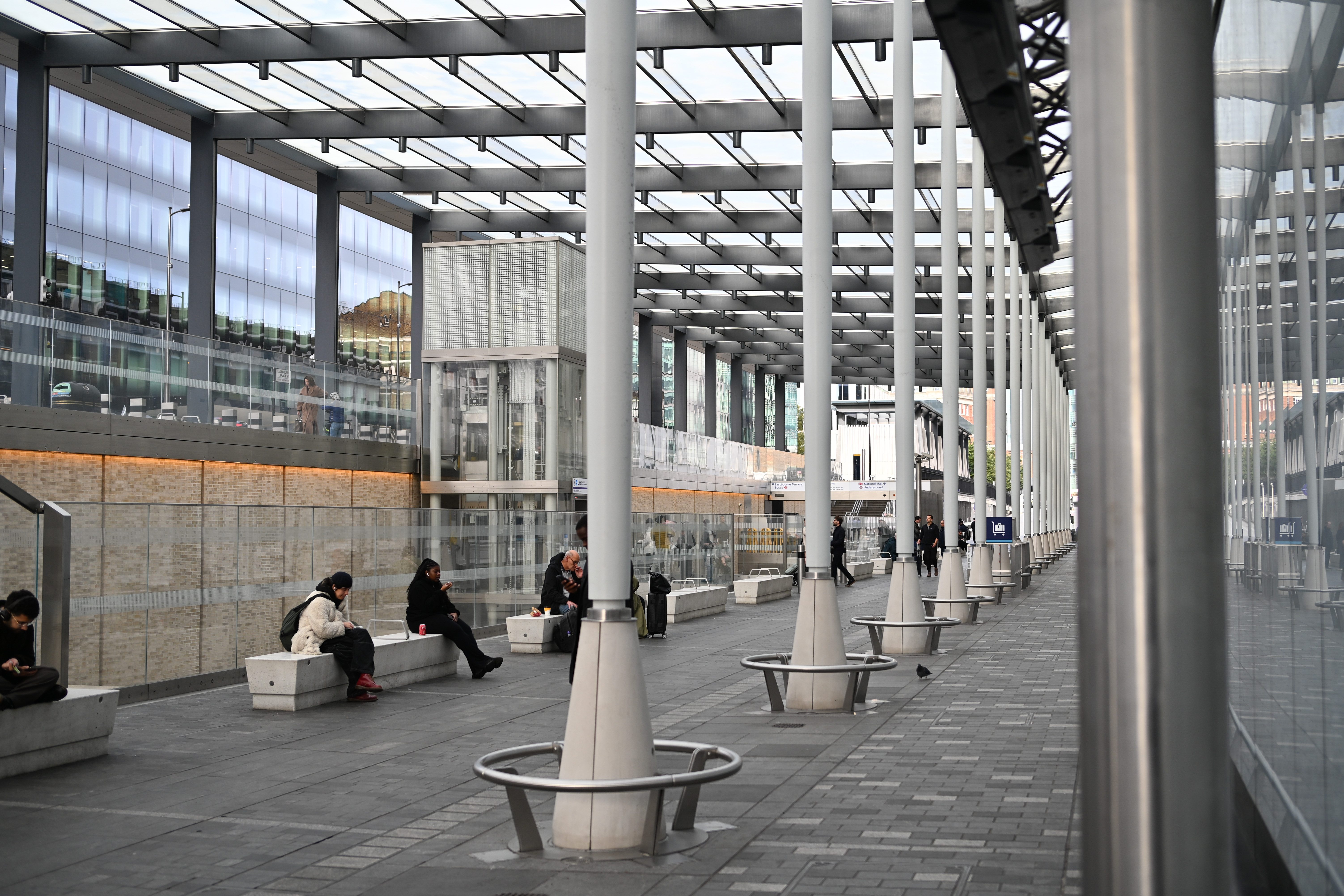
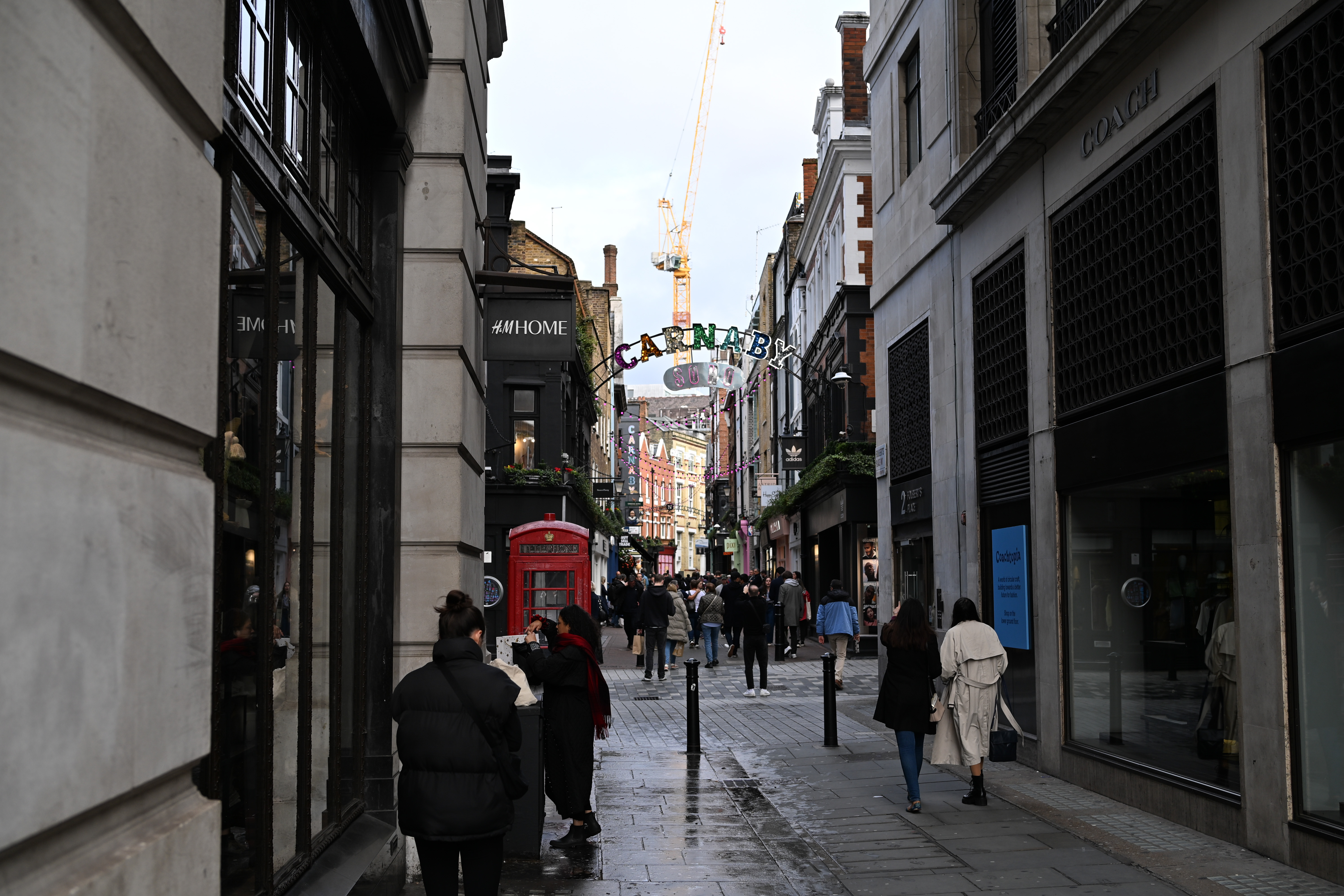
Nikon Zf: Lab results
Finding rival cameras for our lab data comparison wasn't easy. Alternative retro-themed full-frame mirrorless cameras at the $2,000 price point are non-existent, so we're instead comparing the Zf to the Fujifilm X-T5 and Nikon Z fc: two APS-C cameras, but both with traditional styling and ergonomics. Canon doesn't - yet - have a retro rival for the Zf, leaving us little choice but to represent them with the EOS R6 Mark II, which at least is a close match to the Zf on price.
We test resolution using Imatest charts and software, and dynamic range and signal to noise ratio with DxO Analyzer.
Resolution:
It's no surprise to see the Zf tied with the EOS R6 II for outright detail resolving power, as both cameras share a near-identical megapixel count. Despite its smaller sensor size, the 40MP X-T5 can still out-gun the full-frame cameras here when it comes to capturing fine detail.
Dynamic range:
The Zf captures excellent dynamic range. At low to mid sensitivities it's marginally better than the Zfc and X-T5, but increase the ISO still further and the full-frame Zf pulls out a commanding lead, capturing up to 2 EV more dynamic range than the EOS R6 II.
Signal to noise ratio:
This test compares the amount of random noise generated by the camera at different ISO settings as a proportion of the actual image information (the 'signal'). Higher values are better and we expect to see the signal to ratio fall as the ISO is increased.
The Zf produces a similar degree of image noise to the EOS R6 II and X-T5, all the way through the tested ISO range.
Nikon Zf: Video Performance
You might not think it due to its classic looks, but the Nikon Zf makes a pretty decent video camera. While the Nikon Zf isn’t being positioned as a true filmmaker’s camera, it has respectable video specs and it looks like it will be a very capable camera for anyone creating video content for YouTube or social media, and with a fully articulating screen, the camera is also a great choice for vloggers.
The camera can shoot in 4K up to 60p, although if you drop down to 30p, the Zf oversamples 6K footage for better quality. The Zf also packs in up 8 stops of in-body image stabilization with compatible lenses, and in my testing, I was able to produce some pretty smooth footage while panning. When it came to heavier movement like walking the stabilization struggled more, although Nikon’s boosted digital IS helped a little, although you’ll still want to invest in a gimbal for action shots.
When not tracking a specified subject, the focus left to its own devices can be a little slow to adjust to changes, and sometimes the camera just wouldn't refocus automatically despite a clear change in subject. A quick tap on the screen rectified this easily enough, but other camera systems seem a little faster and more willing to swap focus than the Zf.
Nikon Zf: Final Verdict
The Nikon Zf is sure to steal the hearts of vintage camera enthusiasts. From the moment I laid my hands on this camera, it stirred up a wave of nostalgia for the bygone days of shooting film. The camera's body represents a significant upgrade from Nikon's first attempt in this segment, the Nikon Z fc, with the Zf body boasting a more substantial presence with its robust brass dials and a weighty feel reminiscent of the iconic Nikon FM2 that served as its inspiration.
However, all this beauty comes at the cost of compromised ergonomics with Zf’s minimal grip being uncomfortable to hold, you’ll probably want to try and bag a Smallrig extended grip. With a lack of Nikon vintage-style lenses natively for the Z mount, you are also limited to modern Nikon lenses, or old lenses via an adapter, which spoils the aesthetic somewhat.
However, for actually taking photos and video, the Zf is the closest thing to a new Z6 right now, with its 25MP full-frame sensor and Nikon's cutting-edge Expeed 7 processor, the Zf offers much better autofocus and subject tracking, as well as solid 4K video performance. After a few disappointing compromises made for the Nikon Z fc, the Nikon Zf finally feels like the vintage-inspired camera Nikon we have been waiting for all along.
You might also like...
If you want a camera that offers the same classic retro styling and excellent build quality as the Nikon Zf then look no further than the Fujifilm X-T5. Both cameras are built around the same concept of manual dials, however, Fujifilm one-ups Nikon with its wider selection of lenses with matching classic styling and manual aperture dials. The Fujifilm X-T5 does only have an APS-C sensor, but at 40MP, it bests the Zf’s for resolution.
The Nikon Z fc might not have the same build quality as the larger Zf, but it still looks pretty much the same with its pretty vintage design. The important difference however is the Z fc can be had at significantly cheaper. You will miss out on some of the very best technology offered by the Zf, but if you aren't planning on using this as a professional camera then the Z fc will be perfect for your needs.
Read More: check out our top picks for the best Nikon camera and the best Nikon lenses. Or if you are missing shooting film, then check out our guide for the best film cameras.

Gareth is a photographer based in London, working as a freelance photographer and videographer for the past several years, having the privilege to shoot for some household names. With work focusing on fashion, portrait and lifestyle content creation, he has developed a range of skills covering everything from editorial shoots to social media videos. Outside of work, he has a personal passion for travel and nature photography, with a devotion to sustainability and environmental causes.
